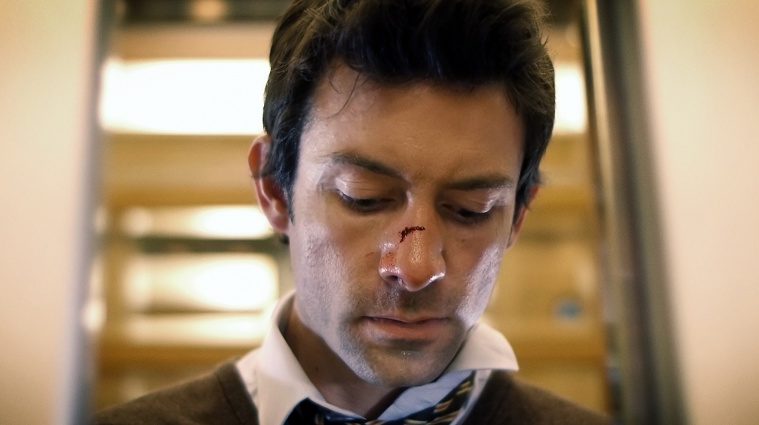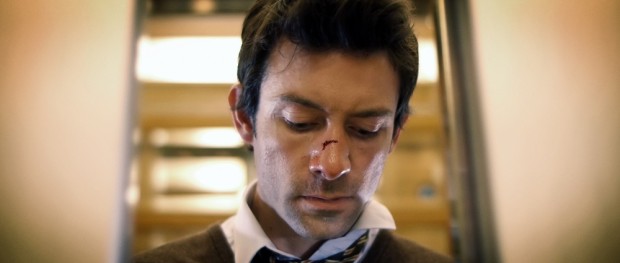
Premiering at the Sundance Film Festival a few months ago, Primer writer-director Shane Carruth delivered another divisive work of science-fiction with the mesmerizing Upstream Color. Having recently begun its theatrical roll-out, we strongly advise heading into this feature knowing as little as possible, and thankfully our chat with the man behind the work will do little to spoil the experience.
Sitting down with Carruth at Sundance, we discussed what he has learned in the last nine years, if he’ll ever return to his ambitious project A Topiary, where the idea from Upstream Color came from, his collaboration with Ain’t Them Bodies Saints director David Lowery, what his next project will be and much more. Check out the conversation below and one can also listen to a different audio interview over on The Film Stage Show.
It’s been 9 years since your last film. With Primer, some of the filmmaking was self-taught or you took it upon yourself to learn. In the nine years since you made Primer, what have you learned when it comes to Upstream Color? I know Upstream Color is a much more visually expansive film.
I don’t know. It is [visually expansive] and it’s really ambitious. Just the sheer number of locations, I think we have something like 1,800 shots in the movie. On average we cut every three seconds and then there are segments we don’t cut for a minute and a half. It’s crazy. It’s a bigger deal, so that required (absolutely) the help of people that had some more time and were really wonderful with what they did. There’s that. It’s weird though, sometimes I feel like I didn’t learn anything because I spent so much time going down this other path trying to get this other film made and wasn’t able to do it and then I came back to something I could control and not really ask permission for. So in some ways, I got in the midst of Upstream Color and would think, “Didn’t I swear to myself I wasn’t going to do this?” It’s difficult, it’s really difficult when you just throw down the gauntlet and you’re like, “I’m going to make this thing and I don’t really care how prepared we are and it’s got to happen. I’ve got to stop waiting.” It’s both positive and negative. The positive is, “Well great, we’ve got a finished film here and I’m extremely proud of it.” The negative is putting everyone through hell because we didn’t have enough resources.
If Upstream Color is a film which hopefully will have great success, do you hope someday to return to A Topiary?
Well, I don’t know. I’m writing something now and I decided basically I’m going to make the films I can make. I’m not going to be asking for permission. I’m not going to try and get political or lobby or pitch or do any of these things because I’m just not good at it and to be honest it’s just heartbreaking. I came to film from a job, a job that paid. I came here because this is my joy and I can’t let it get perverted anymore with meetings and the crassness of the business. It was just driving me nuts. I wasn’t getting straight answers; nobody was saying “no” to me. There was nothing but enthusiasm, but it just wasn’t happening. So I had to be the one to kind of say, “Well we’re going to stop now, we’re going to stop this process.” I don’t want to do that again. I want to keep doing things I’m really passionate about and I’m really lucky that I had this and that I have this next thing. Yeah, I think that’s what I would like my life to be: telling these stories and every 18 months and crafting a release that’s contextualizing it properly.
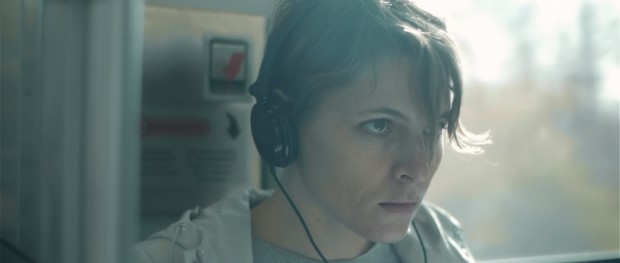
So with each new project you will control the marketing and everything?
Now it is. Having had the experience I just had in the last few months where I got to make the decisions and cut my own teasers and trailers and key art stuff, I don’t think I could ever give that up again. That’s just too intimate a connection, to have the audience receive the work. I mean it’s enjoyable; it’s too enjoyable I guess. If I can find a way to off load the other things, the technical work, the accounting and the paperwork, that sort of thing, then this stuff is just joyful.
I’m a sucker for teasers that evoke a certain emotion but don’t tell you anything. Were there any other versions of teasers or did you always have this kind of goal where you said, “I’m just going to show the very basics.” I don’t think there is much you could even put in a teaser that would reveal a lot.
Exactly. No this was actually the plan for a while. I knew that I wanted to do one that was just basically an announcement. It’s going to be confounding, we’re going to show some visual elements that no one’s going to be able to piece together but they’re going to now know that something’s coming and it has these visual cues in it. The next one, the “Starlings” one, there’s no genre elements in it at all, there’s nothing in it. If you saw it by itself you might think it’s about a relationship that’s falling apart due to alcoholism or something. I really wanted that because it basically says, “Look here’s where we’re going to end up going, so let’s all get on the same page” and if this is something you’re into, my God then this film is going to be for you. If it’s not then great, we’re not setting expectations in the wrong place. So that was really important to me, and then knowing the trailer itself was going to be a combination of the two. How fun is that? To be able to plan this stuff out and not have it be a big-group-thing type bureaucracy.
Regarding Upstream Color, where did the genesis of the idea come from?
It definitely came from this foreign concept of personal narrative and personal identities being built and how they’re built, whether they can ever be changed; and it’s meant to be an exploration of that. I wanted to take some characters and I knew I would be stripping them of everything that they could understand about themselves so that they wake up at a point in their life where it looks like they’ve done something but they can’t really explain why they would have, because the only explanation would be something that would be difficult to absorb. For Kris, she comes to the understanding, “Oh I must have had a mental break” and she’s now on meds. For Jeff it’s that he’s just a thief and that’s his identity. He sort of just embraces that; he’s just a bad guy. That’s what I wanted to play with, and to get there I sort of needed this construct to be swimming around that would be affecting them at a distance and they can’t ever know what that is. They can’t name it; they can’t speak to it, the sheer mania that would happen by feeling emotional states that you can’t explain. You can’t point to anything and directly understand anything about them. I don’t know, to me that just feels incredibly universal and really rich, rich material to mine.

I talked to David Lowery, who directed Ain’t Them Bodies Saints, another film I loved here. He helped edit this with you and told me the production was four months or so, was it longer than that? There’s also a very specific type of emotion conveyed in the film. Did you storyboard or find they rhythm in the editing room?
He’s amazing. Something like [four months] because there was stuff shot before we were in production and stuff shot after. There’s stuff that is rigidly storyboarded. There’s stuff upfront that is all about control and precise shots and compositions and it’s meant to play out in a very synched way, and those are rigidly storyboarded. Then there are parts at the end that are as well. We’ve got a lot of match cuts and we are following somebody in one environment and then we need to see them in the next. That’s the way we come to understand. Because we are in a completely subtextual world, and because there’s no dialogue, the only way to connect two moments and say that they are speaking to each other is by these match cuts. The editing has to be known before you shoot really, I mean I was walking around with my phone with a still from what we shot yesterday so I could match what we’re shooting today, that became very important and dictated the edit. Then there’s the bit in the middle, this very sort of subjective, emotional experience and that is different. There were always storyboards in the lines of the script that I would sketch out but those were things I would quickly toss away if there was some other, more intimate, way to get there. I think the thing is I don’t like the idea of improv-ing or just making stuff up as you go, except if you’ve built a solid enough language and you’ve come to be adept enough at it. I think at that point maybe you have the permission to go in there and go, “Look I got this tool kit, I know how it works, let’s just find what’s the best solution (given what we have to work with), given the tools we’ve already established.” So that middle third is sort of like the ending. Sorry, you asked about editing and I would say that’s reflected in the edit as well. There isn’t only one way that that could’ve gone.
So you brought on David after you had an assembly edit and he kind of took over?
Yeah, he saved my life basically. [He] completely saved my life because I had it in my head that, while we were shooting, I would be editing at night. The day was just cram-packed, I just couldn’t keep up. I was sleeping like 90 minutes a night and I was managing the edit, but every day I was falling further and further behind. So I got desperate, andI just didn’t expect him to be amazing; and he wasn’t “David Lowery, director of Ain’t Them Bodies Saints.” He was just a friend of a friend. So he came on and saw what I had done, matched it perfectly (without any ego whatsoever) and I came to really trust him and then he started after a lot of conversations. Which was completely key and integral, to be able to communicate with each other is so important and he knows that. Then he started bringing his own ideas into it and it’s just amazing and it’s so rare. I truly came to trust him and it became very collaborative. When we stopped shooting I was able to focus a bit more on editing and so we would edit, not side by side but room by room. He’d be over there and I’d be over here and we wouldn’t see each other for a couple hours and then suddenly I’d see what he was working on.
Were you able to give any input on his film? I know he was probably in his pre-production stage for his movie but were you able to give any input for his?
I was. I don’t know if he wants me talking about this, but I’m going to say it anyways just because it’s true. I don’t think he’d mind. I really do think that we’ve come to have a pretty good rapport. He was editing Ain’t Them Bodies Saints and he would send me a Vimeo link of a five minute segment and I’d send him some notes about what I thought, not that it matters because he knows exactly what he’s doing, but it’s a lot of fun. I guess one or two times I’d send him some notes and he would respond and we’d send emails back and forth. After a while it felt like maybe I had permission to take a stab at it myself — not to fix it — but to show what I might do given my sense of it. So yeah, I did that and it’s just been really great. I think the best thing about David is I knew that I could spend some time cutting something the way that I think it should work and he could come back and go, “that’s really beautiful, but it’s not what we’re doing on here”, and I know he wouldn’t say that out of any reason other than he has a specific vision. It wouldn’t be, “Oh he rejects it because he doesn’t want me stepping on his property.” It’s really such a rare and wonderful relationship.
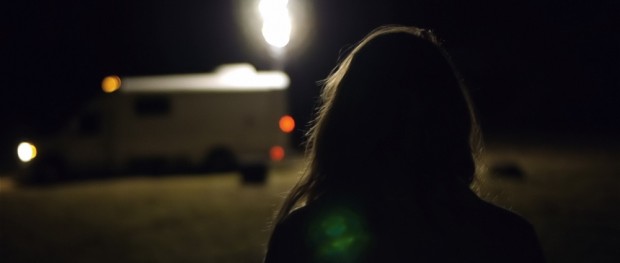
Were you able to see his film here at Sundance?
I saw a rough cut a while ago but no I haven’t seen it here. Then I saw they did some more work that is just brilliant, like so brilliant, and now I’ve seen the opening 15 minutes multiple times and just seen it had gotten better and better and better. Finally when it’s all lights down I’ll be able to see the whole thing.
I love the practical effects you used [in Upstream Color]. Was there any CG involved with any of that?
[There’s] no CG in the movie. Well, except when Kris is at work and she’s meant to be an effects artist.
The literal Upstream Color elements, where was that all done?
It’s done in an aquarium and my backyard, some in an aquarium in the back room. It’s weird, David and I would be at the editing stations working and then ten feet back Tom Walker, the production designer, is brewing up a weird stew of microscopic effects and stuff. So you would go over there and check the frame and then you’d do stop motion for the next eight hours and we’d go back to editing.
You shot in Dallas. What’s special for you about that community?
Absolutely nothing. That’s the thing; I don’t even know if there is a film community, I’ll be honest. I’m shocked that. I think Casey Gideon, the producer, knew Toby, David and James somehow, I don’t know how, but I met them through him and they’re like the only filmmakers (pretty much) I ever met in Dallas. David is the only director I ever met from Dallas that’s directed a feature, and now I guess we’re here. It seems strange, it seems so strange. Everybody that worked on this film is amazing and I’m sure there’s a thriving community there but I just don’t know it. I know they all seem to know each other but I just don’t, I haven’t been in it. I hope that doesn’t come off weird. I didn’t mean to say anything weird about that, I just don’t know much about the community there.
Were you influenced by anything in particular, are there any sci-fi-tinged movies that you enjoyed in the past decade or so?
[Steven] Soderbergh’s Solaris is probably the thing that I’ve watched the most in the last ten years that would be considered science fiction. I can watch that movie on repeat basically but I don’t even think that film needs to be science fiction. It could’ve been anything.
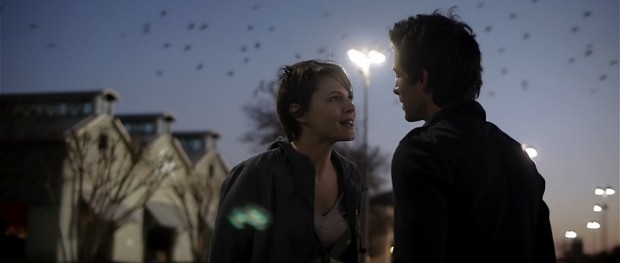
Both films have a really strong emotional center. I’ve only seen Upstream Colors once, I look forward to seeing it again. When it ended I definitely felt very satisfied and I think I got a basic understanding of the plot. Would that be a dream goal for you for most audiences when they first watch it?
Absolutely. That’s the thing; I’m trying to do something new. I’m starting to realize that I’m going to start using the phrase “album movie.” It’s an album that you put on and hopefully you have a decent experience and emotional experience with it but that that’s not the end of it, that’s not the end of the internalization of it (hopefully). I mean if it’s good enough, the hope is that it’s not something you have to see twice, it’s something you want to see twice. That you know, live with for a day and talk about. That’s the goal for it; that people will come to understand what its ambition is and then judge it based on that instead of something else.
Regarding your distribution plans, you’re starting in some cities in April and pop up screenings right? How far along in the future would VOD release be?
Yeah, we open April 5th in New York and then we expand too. Right now we’re booked in over 20 North American markets but by that time it would likely be a lot more than that. About a month later we will come out on cable VOD, retail VOD, iTunes, Amazon and all the digital transactional marketplaces. If we are lucky enough that theatrical continues to expand or continues to play then there will be a period of time where both will be out, digital and theatrical.
Was it important for you to get the theatrical out first? Was it important for you for people to at least have the chance to see it theatrically first and have that experience.
Yeah it is. It’s weird though because I completely recognize that there’s like a lot of schools of thought on this and all of them have this success story they point to. So it’s really difficult to say what’s right and what’s wrong. For me, I still remember a time where you saw something in the theater and if you liked it you’d say, “Oh great, I’m going to see it again on video. So it seems like there’s an expectation that I’d rather not experiment with but at the same time we also don’t have every resource in the world and we need to raise awareness. If cable VOD is too far after theatrical then it’s like we do a bunch of work to raise awareness for theatrical and then awareness goes down and we got to rack it back up. So it’s almost like they need to be close enough to where one can benefit the other as far as the general public knowledge and access.
So are you planning your own personal tour around the US in terms of pop up screenings and you being there? Is that influenced at all by Paul Thomas Anderson?
Unfortunately, I would be lying if I said it wasn’t. I really responded to all that.
Modern Ocean, which is the next project — is there anything in connection of other previous works in terms of style?
Yeah, absolutely. It’s a continuation of the visual and the emotional language of Upstream Color. It’s meant to go much, much further. It’s pretty expansive as a matter of fact. I can’t wait. I really feel like I maybe just scratched the surface on this thing. The next one is a real deep dive. It’s going to be good.

Upstream Color is now in limited release. Check out more details on the official site.

